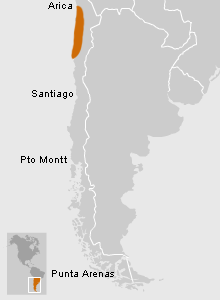These groups inhabited the segment of the northern Chilean coast that extends from Pisagua to Chañaral, a riverless zone where one of the planet’s richest seas meets one of its driest deserts. Along this entire strip of land, no rivers cross the intermediate depression to the ocean, except for the Loa. This rugged coast boasts the highest peaks of the Coastal Mountain range, and in some places the mountains drop down to the sea so sharply there is no beach. The mountain barrier also traps the sea mist, called camanchaca, which provides enough moisture to produce a variety of vegetation on its slopes, including cacti, bushes and grasses. These plants sustain animals like the guanaco, the taruca or Andean deer, the chinchilla and other rodents, as well as birds.
How to Arrive
El Museo se encuentra ubicado en pleno centro de Santiago, en la esquina de las calles Bandera y Compañía, a una cuadra de la Plaza de Armas.
Tickets
Chileans and resident foreigners: $1,000 Foreigners: $8,000 Chilean students and resident foreigners: $500 Foreign students: $4,000
Guided Visit
El Museo cuenta con un servicio de guías, sin costo adicional, para los establecimientos educacionales.
Information for Teachers
Invitamos especialmente a coordinarse con alguno de nuestros guías para programar una visita o actividades de motivación y seguimiento que aprovechen de la mejor forma la experiencia de visitarnos.
Audioguides
Download recordings of the Permanent Exhibition display texts in English, French, Portuguese and Spanish here. These audioguides are in mp3 format and are arranged by cultural area, following the same order as our exhibit galleries. Descargue desde esta página audioguías en castellano, inglés, francés y portugués con los textos de las vitrinas de la […]






































